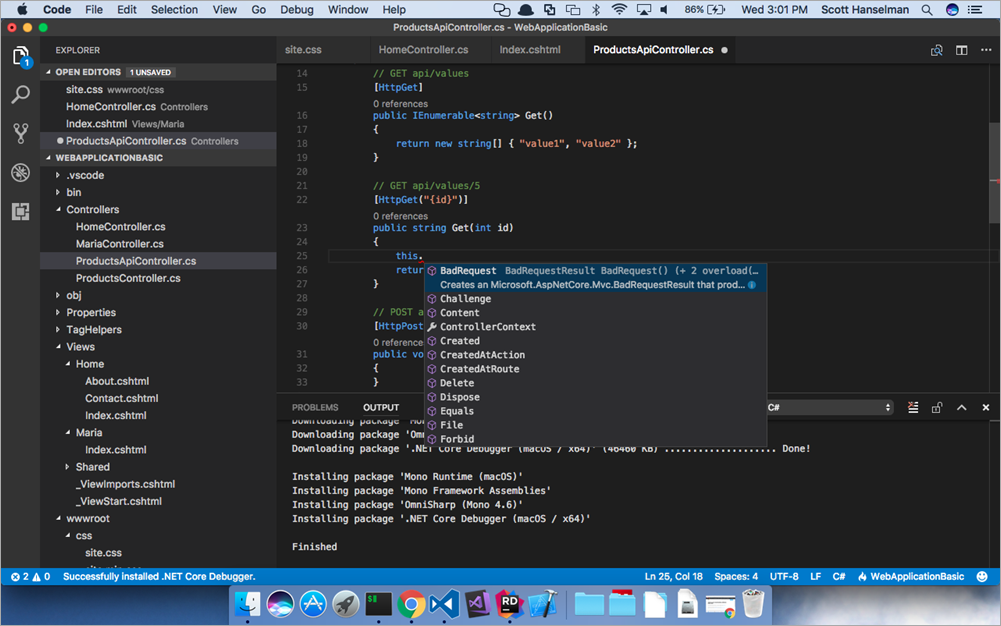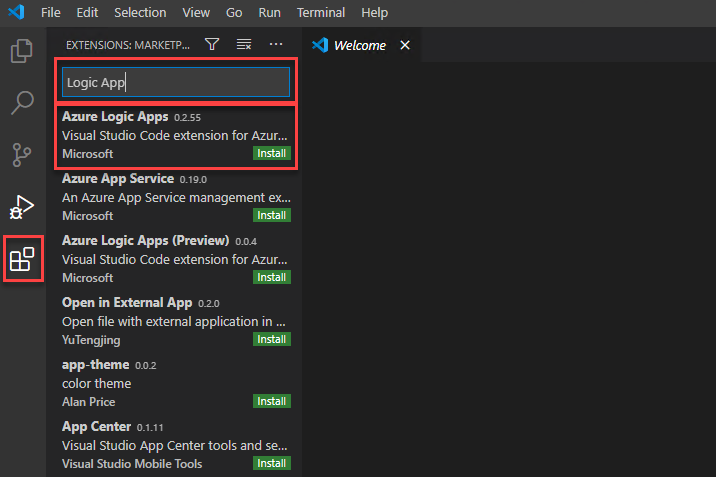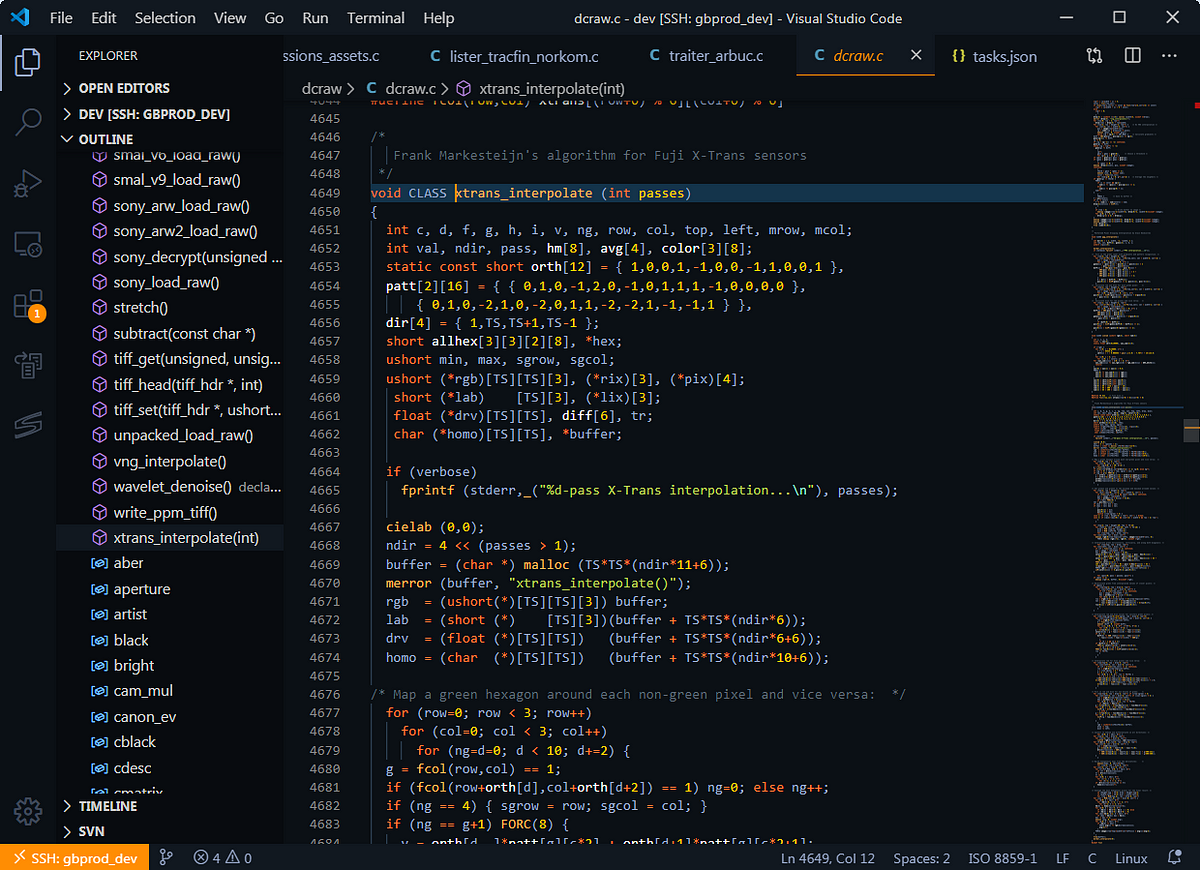- Visual Studio Code Run Code Roblox
- Visual Studio Code Run Code Java
- Visual Studio Code Run Code 1
- Vs Code Vs Visual Studio
Matlab Code Run Extension for VS Code. Run Matlab code straight from VS Code! This plugin is currently under development and has not yet been tested extensively. If there are any issues, feel free to open an issue in the Github repo! Currently only tested on Mac OS, but it will probably also work on Linux. Then use a Visual Studio Code terminal window (you can open a new one from the Terminal tab at the top of Visual Studio Code) to change directory to where your.py file resides, and run as normal: PS C:Usersjoecoder cd vscodepython PS C:Usersjoecodervscodepython python test.py 1 2 3.
What you need to do to run a program depends on what you're starting from, what type of program, app, or service it is, and whether you want to run it under the debugger or not. In the simplest case, when you have a project open in Visual Studio, build and run it by pressing Ctrl+F5 (Start without debugging) or F5 (Start with debugging), or press the green arrow (Start Button) on the main Visual Studio toolbar.
Starting from a project
If you have a C# project (.csproj file), then you can run it, if it is a runnable program. If a project contains a C# file with a Main method, and its output is an executable (EXE), then most likely it will run if it builds successfully.
If you already have the code for your program in a project in Visual Studio, open the project. To open the project, double-click or tap on the .csproj from the Windows File Explorer, or from Visual Studio, choose Open a project, browse to find the project (.csproj) file, and choose the project file.
After the projects loads in Visual Studio, press Ctrl+F5 (Start without debugging) or use the green Start button on the Visual Studio toolbar to run the program. If there are multiple projects, the one with the Main method must be set as the startup project. To set the startup project, right-click on a project node, and choose Set as startup project.
Visual Studio attempts to build and run your project. If there are build errors, you see the build output in the Output window and the errors in the Error List window.
If the build succeeds, the app runs in a way that's appropriate for the type of project. Console apps run in a terminal window, Windows desktop apps start in a new window, web apps start in the browser (hosted by IIS Express), and so on.


Starting from code
If you're starting from a code listing, code file, or a small number of files, first make sure the code you want to run is from a trusted source and is a runnable program. If it has a Main method, it is likely intended as a runnable program that you can use the Console App template to create a project to work with it in Visual Studio.
Code listing for a single file
Start Visual Studio, open an empty C# console project, select all the code in the .cs file that's in the project already, and delete it. Then, paste the contents of your code into the .cs file. When you paste the code, overwrite or delete the code that was there before. Rename the file to match the original code.
Code listings for a few files
Start Visual Studio, open an empty C# console project, select all the code in the .cs file that's in the project already, and delete it. Then, paste the contents of the first code file into the .cs file. Rename the file to match the original code.
For a second file, right-click on the project node in Solution Explorer to open the shortcut menu for the project, and choose Add > Existing Item (or use the key combination Shift+Alt+A), and select the code files.
Multiple files on disk
Create a new project of the appropriate type (use C# Console App if you're not sure).
Right-click on the project node, se Add > Existing Item to select the files and import them into your project.
Starting from a folder
When you're working with a folder of many files, first see if there's a project or solution. If the program was created with Visual Studio, you should find a project file or a solution file. Look for files with the .csproj extension or .sln extension and in the Windows File Explorer, double-click on one of them to open them in Visual Studio. See Starting from a Visual Studio solution or project.
If you don't have a project file, such as if the code was developed in another development environment, then open the top-level folder by using the Open folder method in Visual Studio. See Develop code without projects or solutions.
Starting from a GitHub or Azure DevOps repo
If the code you want to run is in GitHub or in an Azure DevOps repo, you can use Visual Studio to open the project directly from the repo. See Open a project from a repo.
Run the program
To start the program, press the green arrow (Start button) on the main Visual Studio toolbar, or press F5 or Ctrl+F5 to run the program. When you use the Start button, it runs under the debugger. Visual Studio attempts to build the code in your project and run it. If that succeeds, great! But if not, continue reading for some ideas on how to get it to build successfully.
Troubleshooting
Your code might have errors, but if the code is correct, but just depends on some other assemblies or NuGet packages, or was written to target a different version of .NET, you might be able to easily fix it.
Add references
To build properly, the code must be correct and have the right references set up to libraries or other dependencies. You can look at the red squiggly lines and at the Error List to see if the program has any errors, even before you compile and run it. If you're seeing errors related to unresolved names, you probably need to add a reference or a using directive, or both. If the code references any assemblies or NuGet packages, you need to add those references in the project.
Visual Studio tries to help you identify missing references. When a name is unresolved, a light bulb icon appears in the editor. If you click the light bulb, you can see some suggestions on how to fix the issue. Fixes might be to:
- add a using directive
- add a reference to an assembly, or
- install a NuGet package.
Missing using directive
For example, in the following screen, you can choose to add using System; to the start of the code file to resolve the unresolved name Console:
Missing assembly reference
.NET references can be in the form of assemblies or NuGet packages. Usually, if you find source code, the publisher or author will explain what assemblies are required and what packages the code depends on. To add a reference to a project manually, right-click on the References node in the Solution Explorer, choose Add Reference, and locate the required assembly.

You can find assemblies and add references by following the instructions in Add or remove references by using the reference manager.
Missing NuGet package

If Visual Studio detects a missing NuGet package, a light bulb appears and gives you the option to install it:
If that doesn't solve the issue and Visual Studio can't locate the package, try searching for it online. See Install and use a NuGet package in Visual Studio.
Use the right version of .NET
Because different versions of the .NET Framework have some degree of backward compatibility, a newer framework might run code written for an older framework without any modifications. But, sometimes you need to target a specific framework. You might need to install a specific version of the .NET Framework or .NET Core, if it's not already installed. See Modify Visual Studio.
To change the target framework, see Change the target framework. For more information, see Troubleshooting .NET Framework targeting errors.
Next steps

Explore the Visual Studio development environment by reading Welcome to the Visual Studio IDE.
Visual Studio Code Run Code Roblox
See also
Visual Studio Code Run Code Java
Visual Studio Code is an ideal lightweight development environment for Spring Boot application developers and there are several useful VS Code extensions including:
If you run into any issues when using the features below, you can contact us by clicking the Report an issue button below.
Prerequisites
A working Java environment with essential extensions installed is needed, including:
- Java Development Kit (JDK), version 11 or later.
- Apache Maven, version 3.0 or later.
For more details, please refer to Java Tutorial
Note: More information about JDK can be found at supported Java versions.
Create the project
The Spring Initializr extension allows you to search for dependencies and generate new Spring Boot projects.
To install, launch VS Code and from the Extensions view (⇧⌘X (Windows, Linux Ctrl+Shift+X)), search for vscode-spring-initializr.
Once you have the extension installed, open the Command Palette (⇧⌘P (Windows, Linux Ctrl+Shift+P)) and type Spring Initializr to start generating a Maven or Gradle project and then follow the wizard.
Edit the project
The Spring Initializr extension allows you to edit dependencies after generating a new Spring Boot project.
Navigate to your pom.xml file and right-click to select Edit starters. The Command Palette will show the dependencies you already have beginning with a √ . You can search for other dependencies you want to add to your project. Or you can click on the existing dependencies to remove them.
Develop the application
The Spring Boot Tools extension includes rich language support for working with Spring Boot application.properties, application.yml, and .java files.
The extension supports quick navigate through source code, smart code completions, quick access to running apps, live application information, and code templates. Similar code completion and validation features are also available for .properties and .yml files.
Run the application
In addition to click F5 to run your application, there's another convenient extension Spring Boot Dashboard with which you can view and manage all available Spring Boot projects in your workspace as well as quickly start, stop, or debug your project.
Visual Studio Code Run Code 1
Next steps
Vs Code Vs Visual Studio
- To deploy your web app, see the Deploy a Java Application to Azure tutorial.
- To containerize a web app and deploy as a Docker container, check out the Working with Docker.
- To learn more about Java Debugging features, see Java Debugging Tutorial.
